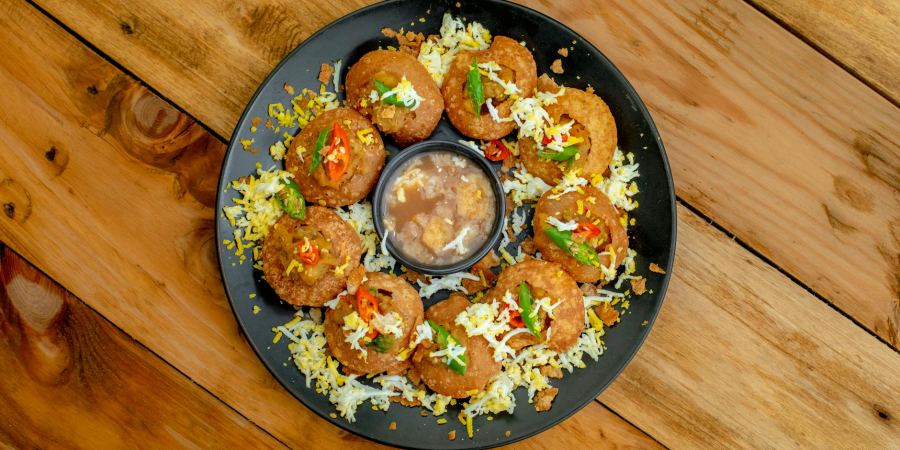

Heyy goiss!! Soo today's topic is all about our all time favorite snack PANI PURI!! Wanna know the history about it?! Here I go and share you guys an informative points about pani puri!!🙂↕️🔥❤️✌️
Title: Exploring the Rich History and Cultural Significance of Pani Puri
Introduction:
Pani Puri, also known as Golgappa, Puchka, or Phuchka, is a beloved street food snack enjoyed across the Indian subcontinent and beyond. This delectable treat consists of hollow, crispy puris filled with a mixture of spicy, tangy water (pani) and various fillings such as potatoes, chickpeas, onions, and chutneys. While its exact origins are debated, pani puri has a rich history deeply rooted in Indian culinary traditions and cultural heritage.
Historical Origins:
The exact origins of pani puri are shrouded in mystery, with various theories and legends surrounding its creation. Some culinary historians believe that pani puri originated in the Indian state of Uttar Pradesh, particularly in the region of Varanasi, during the 19th century. According to this theory, pani puri was initially created as a variation of the traditional North Indian snack known as phulki or pakodi, which consisted of fried dough balls served with spicy water.
Another theory suggests that pani puri has its roots in the Mughal courts of medieval India. It is believed that the Mughal emperors and their nobles enjoyed a similar snack called "paani ke batashe," which consisted of small, hollow bread balls filled with flavored water. Over time, this culinary tradition spread to different regions of the Indian subcontinent, evolving into the pani puri we know today.
Cultural Significance:
Pani puri holds a special place in Indian culinary culture and is deeply ingrained in the culinary traditions of various regions across the country. It is not just a snack but a cultural experience that brings people together, transcending barriers of age, gender, and social status. In India, pani puri is commonly enjoyed as a street food delicacy, with vendors setting up makeshift stalls in bustling marketplaces, street corners, and busy thoroughfares.
The act of eating pani puri is as much a sensory experience as it is a culinary one. The crispiness of the puris, the burst of flavors from the spicy water and fillings, and the communal atmosphere of street-side vendors all contribute to the unique charm of this beloved snack. It is often said that the true essence of pani puri lies not just in its taste but in the memories and experiences associated with eating it.
Regional Variations:
While pani puri is a popular snack across the Indian subcontinent, it is known by different names and variations in various regions. In North India, particularly in Delhi and Uttar Pradesh, it is commonly referred to as "golgappa" or "puchka," and is typically filled with a mixture of boiled potatoes, chickpeas, and tangy tamarind chutney. In Mumbai and parts of Maharashtra, it is known as "pani puri" and may include additional ingredients such as sprouted moong beans or spicy ragda (a curry made from dried peas).
In Kolkata and the eastern states of India, it is known as "phuchka" and is characterized by its smaller size and spicier water. In South India, particularly in Tamil Nadu and Karnataka, it is known as "puchka" or "pani puri" and may feature unique regional variations in fillings and flavors.
Conclusion:
Pani puri is more than just a street food snack; it is a culinary delight that embodies the rich tapestry of Indian culinary traditions and cultural heritage. Its origins may be debated, but its popularity and widespread appeal are undeniable. Whether enjoyed on bustling street corners or homemade with love, pani puri continues to delight taste buds and bring people together, making it an enduring symbol of Indian culinary culture.
DO LIKE AND COMMENT GOISS☺️🤍❤️
